Movies & TV Shows About Autism
Exploring Autism Through Cinema and Television: Insightful Portrayals and Therapeutic Perspectives

Understanding Autism Spectrum Disorder Through Visual Storytelling
Autism Spectrum Disorder (ASD) is a complex neurodevelopmental condition that impacts communication, social interaction, and behavior. Movies and TV shows have increasingly become powerful mediums to depict the diverse experiences of individuals with autism, providing audiences with empathy, education, and a deeper understanding of ASD. Through compelling narratives and characters, these visual stories highlight challenges, abilities, and the importance of therapies like Applied Behavior Analysis (ABA). This article delves into notable films and series about autism, elucidates ABA therapy’s role, and explores qualifications to look for in therapy providers, helping readers grasp both the human and clinical facets of autism.
What Is Autism Spectrum Disorder?
Definition of ASD
Autism Spectrum Disorder (ASD) is a neurodevelopmental condition that principally impacts speech, communication, and behavior. It is generally diagnosed during early childhood when signs related to social interaction and emotional expression become noticeable.
Core Symptoms
ASD is characterized by challenges in social communication and interaction. Individuals typically show persistent deficits such as difficulties in understanding social cues and maintaining conversations. Additionally, they display restricted, repetitive patterns of behavior, interests, or activities. These symptoms significantly affect daily functioning.
Variability in Abilities
The abilities of people with ASD vary widely. Some may show exceptional talents or skills, often referred to as being gifted. In contrast, others might experience severe challenges that require extensive support and interventions. This spectrum nature means treatment and support must be tailored to each individual's unique needs.
Diagnostic Criteria
According to the DSM-5, ASD diagnosis involves certain criteria: persistent deficits in social communication and social interaction, restricted and repetitive behaviors, and symptoms present from an early developmental period. The symptoms must cause significant impairment in functioning across various settings such as home, school, or work.
The Spectrum of Abilities Portrayed in Movies & TV Shows
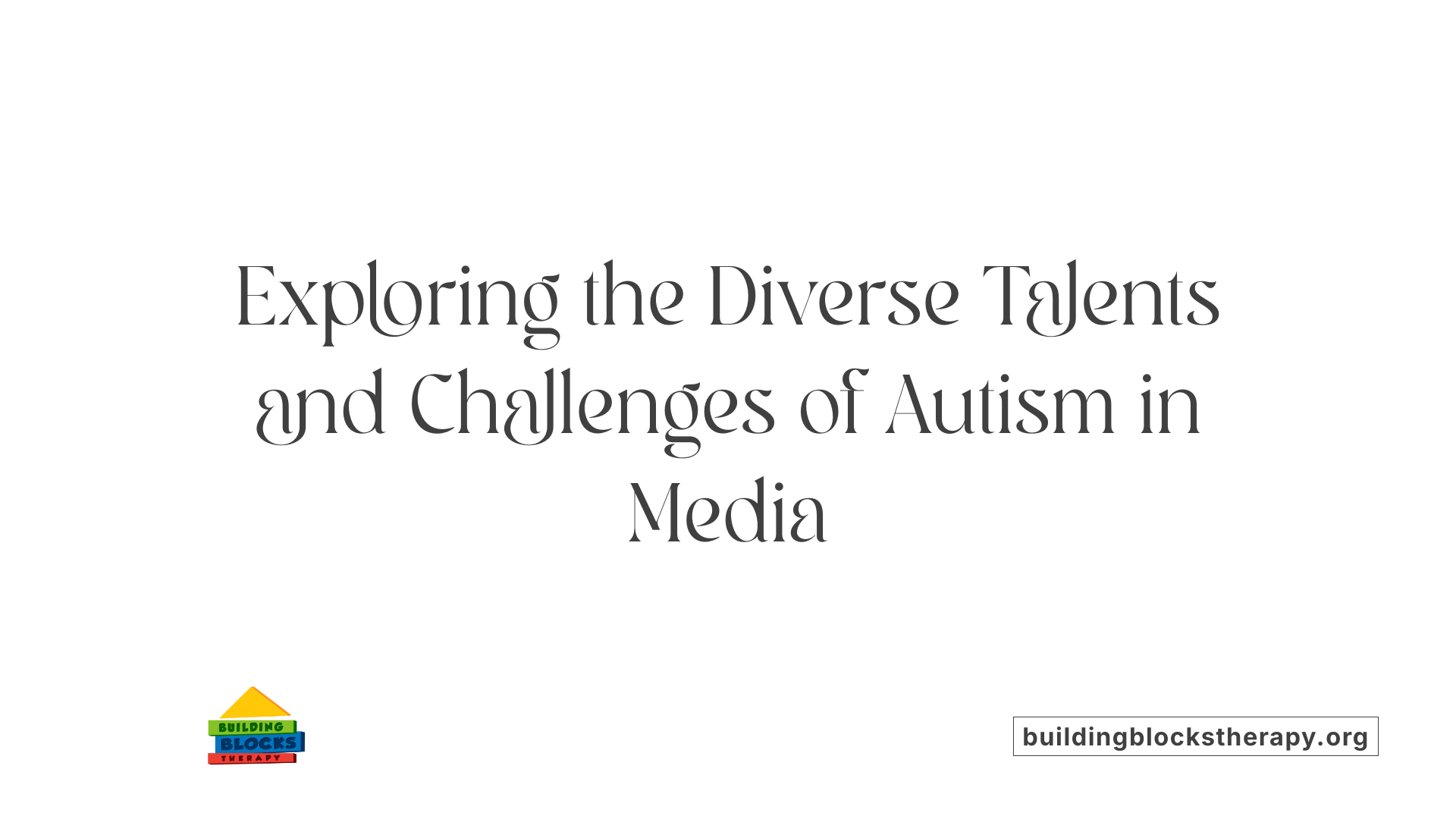
Representation of diverse abilities
Movies and TV shows often represent the wide spectrum of abilities found in individuals with Autism Spectrum Disorder (ASD). These portrayals highlight how autism manifests in very different ways, ranging from highly gifted individuals to those facing significant daily challenges.
Range from giftedness to challenges in media
Media has explored both ends of the autism spectrum. Some stories emphasize extraordinary talents and intelligence, illustrating characters who are gifted, such as in "Rain Man" where Dustin Hoffman's character demonstrates remarkable memory skills. On the other hand, numerous films and shows address the social, emotional, and communication difficulties that come with autism. This duality captures the broad and nuanced nature of ASD.
Examples of characters and narratives
Examples include movies like "The Good Doctor," which features a surgical resident with autism and savant syndrome, blending professional success with social struggles. "Temple Grandin" tells the true story of an autistic woman whose innovations transformed animal welfare. "Atypical" follows a teenager navigating independence and relationships while managing autism traits. Meanwhile, "Please Stand By" and "The Unbreakable Boy" explore the emotional and family dynamics through characters with autism, shedding light on everyday life experiences.
These narratives help audiences understand the diverse presentations of autism and challenge stereotypes by showcasing varied talents and challenges within the spectrum.
Notable Autism-Themed Films and TV Shows
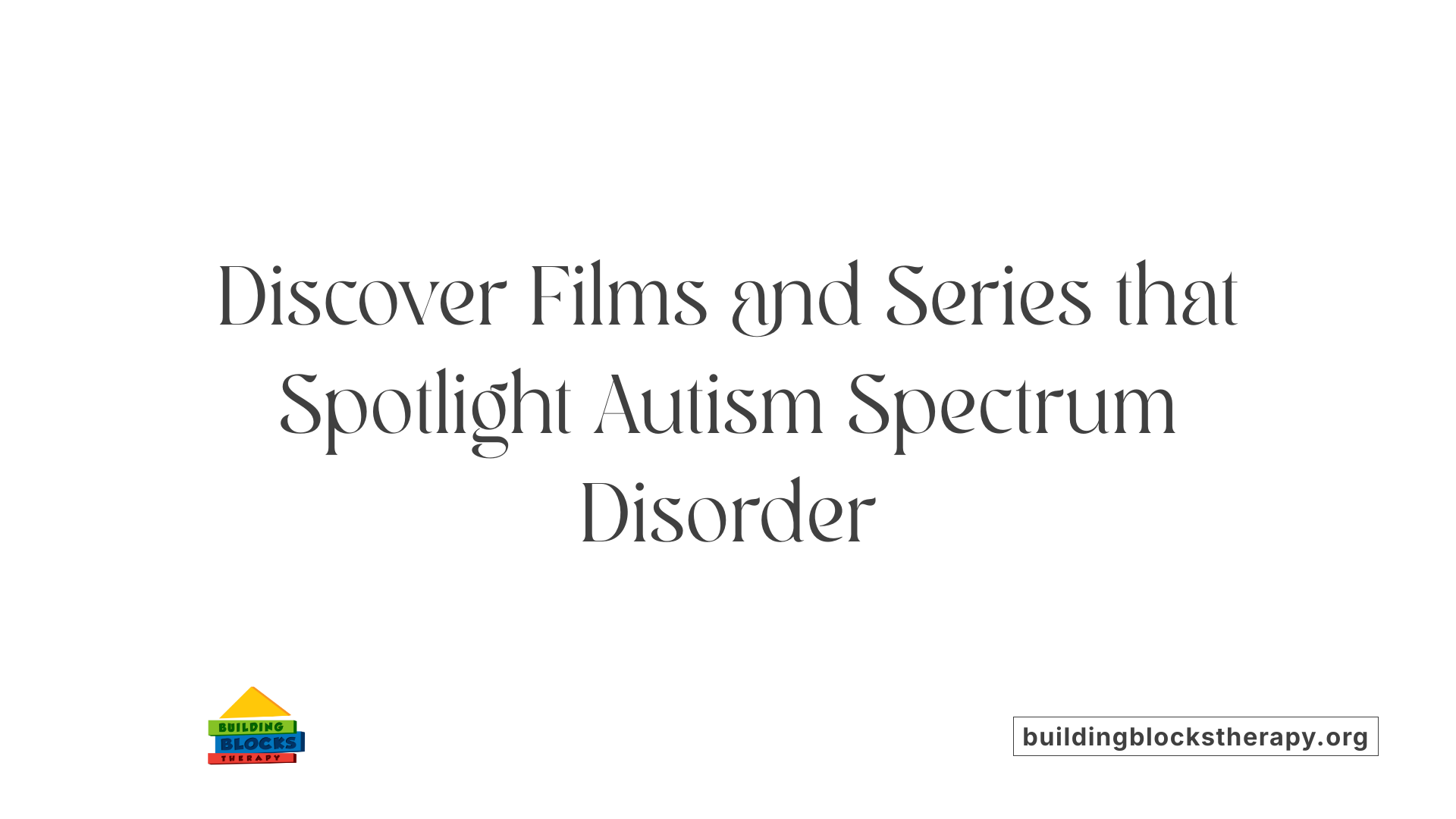
List of representative movies and series
Several films and television shows have portrayed autism spectrum disorder (ASD) to raise awareness and understanding. Representative titles include "The Unbreakable Boy," "Pablo," "Please Stand By," "Nathan's Kingdom," "Jack of the Red Hearts," "Killer Diller," "Atypical," "The Good Doctor," "The A Word," "Loving Lampposts," "Float," "Rain Man," "What’s Eating Gilbert Grape," "Mozart and the Whale," "The Boy Who Could Fly," "House of Cards," "Cube," "Mercury Rising," "Miracle Run," "Snow Cake," "Her Name is Sabine," "The Black Balloon," "Adam," "Mary and Max," "My Name is Khan," "Ocean Heaven," "Temple Grandin," "Exodus Fall," "Extremely Loud & Incredibly Close," "Fly Away," "NightLights," "The Story of Luke," "The Imitation Game," "A Brilliant Young Mind," and "Barfi!."
Themes explored
These works explore a variety of themes related to ASD. Many focus on challenges with social interaction and communication, capturing the spectrum's varied manifestations. Others highlight the emotional journey of individuals and families coping with the diagnosis, the triumphs of attaining personal milestones, or the unique abilities and perspectives of autistic individuals. Some productions specifically depict early developmental struggles, while others delve into adult experiences and functioning in society.
Cultural impact
The portrayal of autism in popular media has contributed significantly to public understanding and empathy. By depicting authentic experiences from different angles, these films and series challenge stereotypes and reduce stigma. They foster conversations about inclusivity, accessibility, and the importance of supportive environments. Notably, they have inspired interest in early diagnosis and intervention, aligning with clinical criteria such as those outlined in the DSM-5. Collectively, these stories help bridge gaps between neurodiverse individuals and society, promoting awareness that ASD encompasses a broad range of abilities and characteristics.
‘Rain Man’ and the Dawn of Autism in Popular Media
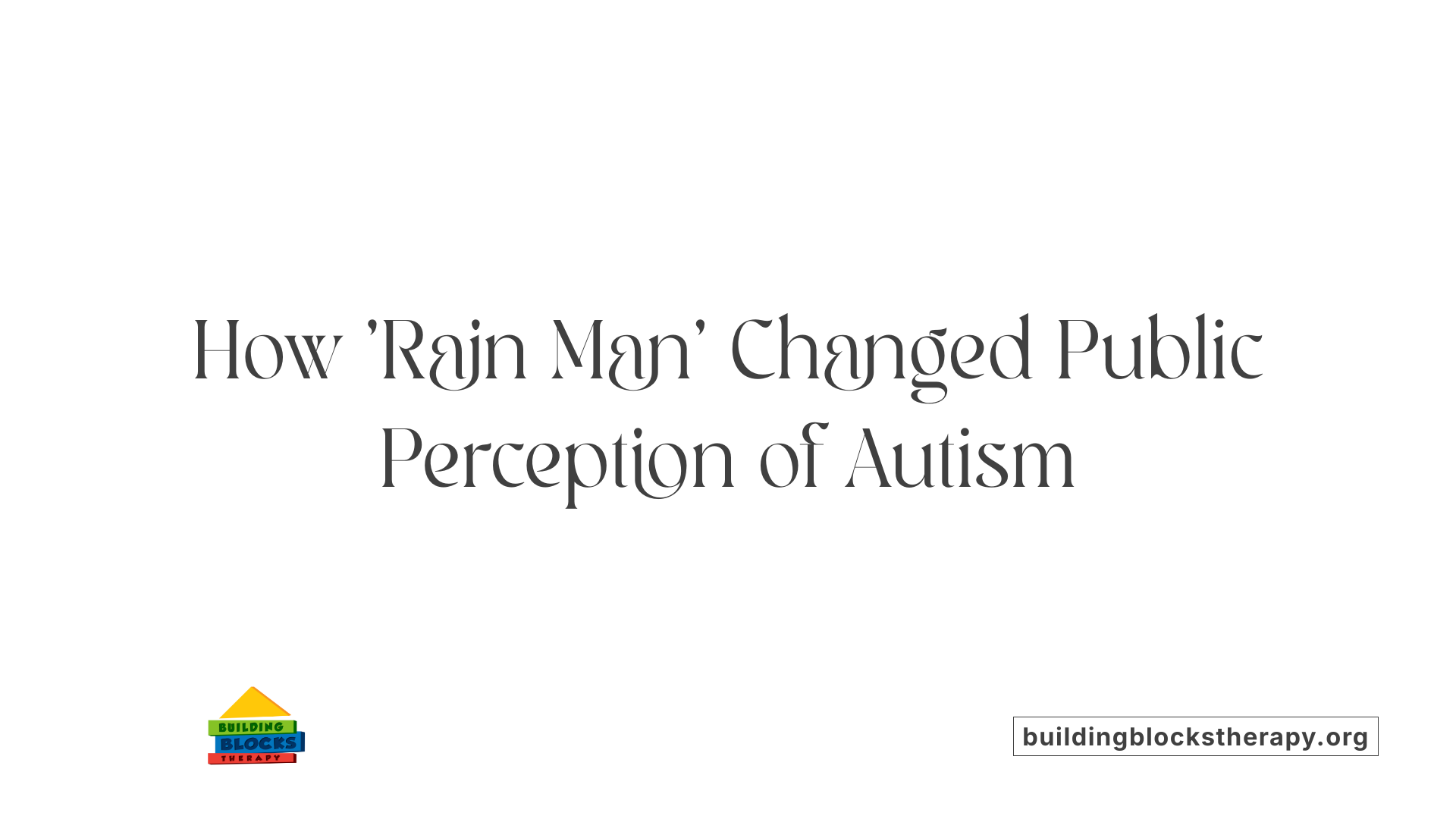
Impact of ‘Rain Man’ film
Released in 1988, Rain Man brought autism spectrum disorder (ASD) into the spotlight by portraying Raymond, an autistic savant with exceptional memory skills. This film was one of the first mainstream movies to focus on a character with autism, significantly increasing public awareness about the disorder. It introduced audiences to the idea that individuals with autism could have unique abilities alongside their challenges, sparking interest in the condition across various sectors.
Awareness and stereotypes addressed
While Rain Man helped raise awareness, it also contributed to some stereotypes around autism. The character's portrayal emphasized the savant aspect, which, though true for a minority, led many to mistakenly associate all individuals with ASD with extraordinary talents. This narrow depiction sometimes overshadowed the broader spectrum of autism, which includes diverse communication difficulties, social challenges, and a range of cognitive abilities.
Effect on public perception
Despite the limitations in representation, Rain Man had a lasting impact on how the public perceives autism. It opened conversations about neurodiversity and fostered greater empathy towards individuals with ASD by humanizing Raymond’s experiences. The film's success encouraged the entertainment industry to explore autism more deeply in subsequent films and television series, gradually leading to richer and more accurate portrayals.
Modern Series Spotlight: ‘Atypical’ and ‘The Good Doctor’
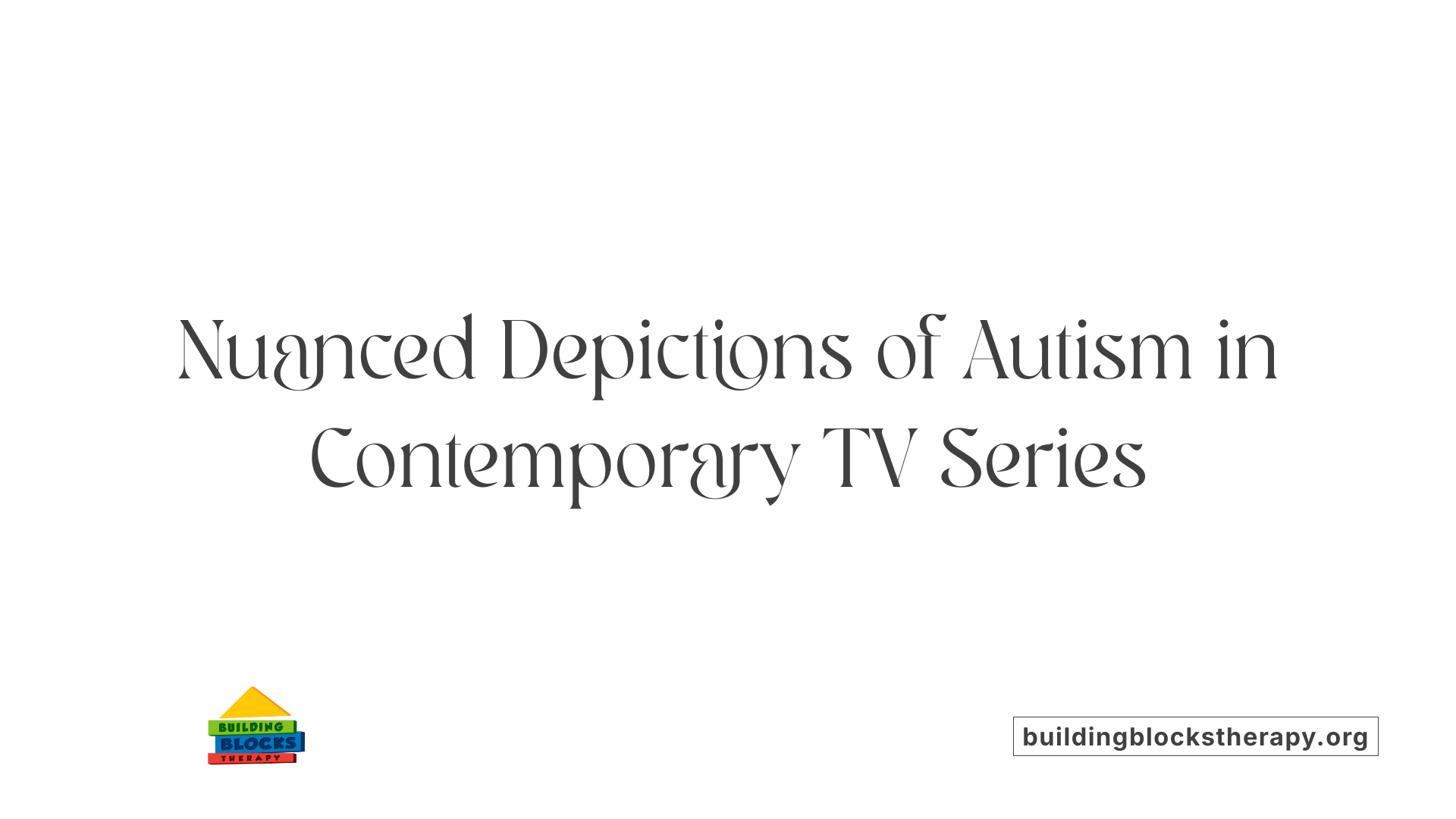
How do ‘Atypical’ and ‘The Good Doctor’ portray autism in contemporary media?
Both series stand out by offering nuanced views of autism, depicting the diverse experiences of individuals on the spectrum. ‘Atypical’ follows Sam, a high school student navigating the challenges of ASD, highlighting everyday social interactions and family dynamics. Meanwhile, ‘The Good Doctor’ centers on Dr. Shaun Murphy, a surgical resident whose extraordinary medical skills contrast with his difficulties in social communication.
What role does character development play in these series?
Character development is crucial for both shows. Sam’s journey in ‘Atypical’ includes his quest for independence and relationships, illustrating growth beyond his diagnosis. In contrast, Shaun’s story in ‘The Good Doctor’ emphasizes professional competence and the struggle to gain acceptance within a demanding hospital environment. Both characters evolve as they confront personal and external challenges related to autism.
How are therapeutic and social themes explored?
The series integrate therapeutic and social themes authentically. ‘Atypical’ portrays therapy sessions and the gradual improvement in social skills, reflecting real-world approaches to support. ‘The Good Doctor’ addresses societal perceptions and workplace inclusion, shedding light on barriers faced by neurodiverse individuals. These themes foster understanding and empathy in viewers, promoting awareness of autism’s complexities.
Together, ‘Atypical’ and ‘The Good Doctor’ contribute to broadening the portrayal of autism on screen, emphasizing individuality, challenges, and achievements within the spectrum.
Applied Behavior Analysis (ABA) Therapy: What Is It?
What is Applied Behavior Analysis (ABA) therapy?
Applied Behavior Analysis (ABA) therapy is a scientifically supported method focused on understanding and shaping behavior using structured and systematic interventions. Primarily used to assist individuals with autism spectrum disorder (ASD) and other developmental conditions, ABA aims to enhance positive skills such as communication, social interaction, daily living, and academic abilities.
Techniques used
ABA therapy utilizes several techniques, including reinforcement strategies that reward desired behaviors to encourage their repetition. Prompting helps guide individuals toward the correct behavior by offering cues or assistance. Structured teaching methods like Discrete Trial Training (DTT) break down complex tasks into smaller, manageable steps. Naturalistic Applied Behavior Analysis takes place within everyday settings to foster skills in real-life contexts. These techniques are personalized to meet the unique needs of each individual, ensuring effective intervention.
Role of professionals
Trained specialists known as Board Certified Behavior Analysts (BCBAs) oversee ABA therapy programs. They assess individuals' behavior, design treatment plans, and supervise therapy sessions. BCBAs often work alongside other professionals, families, and caregivers to implement consistent and intensive therapy, which typically involves several hours per week. Progress is regularly monitored, allowing for adjustments to optimize outcomes.
Through its evidence-based and personalized approach, ABA therapy promotes increased independence, improved functioning, and a better quality of life for individuals receiving treatment.
How ABA Therapy Benefits Individuals with Autism
How does ABA therapy help individuals with autism?
Applied Behavior Analysis (ABA) therapy is a widely recognized and scientifically validated approach to supporting individuals with autism spectrum disorder (ASD). It focuses on teaching new skills and enhancing existing abilities, such as communication, socialization, and daily living tasks.
ABA therapy uses techniques like positive reinforcement, where desired behaviors are rewarded to encourage their recurrence. Other strategies include prompting individuals to perform specific actions and training within natural environments to promote generalization of skills. The therapy is tailored to each individual's unique needs, interests, and abilities, ensuring a personalized and effective intervention plan.
Skill development
ABA therapy aids in the development of crucial skills needed for everyday functioning. This includes improving language and communication abilities, which are often areas of difficulty in ASD. Social skills, such as understanding social cues and engaging in conversations, are also targeted. Additionally, the therapy promotes independence by teaching daily living skills like dressing, eating, and managing personal hygiene.
Behavioral improvements
Beyond skill-building, ABA helps reduce behaviors that may interfere with learning or social interaction. Through systematic reinforcement and behavior modification strategies, problematic behaviors like aggression, self-injury, or repetitive actions can be diminished. This creates a safer and more supportive environment for individuals and their families.
Effectiveness and scientific validation
Research has shown ABA to be effective across all ages with autism. Early and intensive ABA intervention is especially beneficial, leading to significant improvements in developmental outcomes. Children receiving ABA therapy often experience enhanced language acquisition, better social engagement, and increased independence. These gains contribute to improved quality of life and greater participation in community and everyday activities.
Overall, ABA therapy represents a comprehensive, evidence-based approach that empowers individuals with autism to achieve their fullest potential.
Who Provides ABA Therapy Services?
Who typically provides ABA therapy services?
ABA therapy services are delivered by a specialized team of professionals focused on behavior analysis and autism support. The main role is filled by the Board Certified Behavior Analyst (BCBA), who conducts initial assessments and develops personalized treatment plans tailored to the individual's unique needs.
Supporting the BCBA, Registered Behavior Technicians (RBTs) play a crucial role by carrying out the day-to-day therapy sessions under the BCBA's supervision. These trained technicians implement the strategies and interventions designed by the BCBA to help improve the individual's skills and behaviors.
Board Certified Assistant Behavior Analysts (BCaBAs) also contribute by assisting BCBAs with data collection, monitoring progress, and sometimes supervising RBTs, ensuring that therapy remains consistent and goal-oriented.
Parental involvement is strongly encouraged throughout the treatment process. Parents and caregivers collaborate with the therapy team to reinforce learned skills at home and provide essential feedback, which helps tailor the therapy and maximize its effectiveness.
In summary, ABA therapy is not delivered by a single professional but rather through a multidisciplinary team consisting of BCBAs, BCaBAs, RBTs, and actively engaged family members. This team approach ensures comprehensive support and fosters meaningful progress in individuals with autism spectrum disorder.
Key Qualifications to Look for in ABA Providers
Certification and Training
Choosing an ABA therapy provider begins with verifying their credentials. Look for professionals who hold the Board Certified Behavior Analyst (BCBA) certification or are Registered Behavior Technicians (RBTs) under BCBA supervision. These certifications confirm rigorous training and adherence to ethical standards in working with individuals with autism spectrum disorder (ASD). Experience specifically with children on the spectrum adds valuable practical skills to their expertise.
Evidence-Based Practice
Qualified ABA providers employ evidence-based interventions tailored to the unique needs of each child. Effective strategies include Discrete Trial Training (DTT), Pivotal Response Treatment (PRT), and naturalistic teaching methods. Providers should base all therapy plans on thorough assessments, ensuring the approach improves communication, social skills, and behavior in meaningful ways.
Communication and Family Engagement
A provider’s ability to engage families is crucial. Skilled therapists actively involve parents and caregivers in setting goals and designing treatment plans. They maintain ongoing communication about the child's progress and challenges, offering support and training to empower families. This collaborative approach fosters consistency and maximizes the impact of therapy beyond sessions.
Progress Monitoring
Data collection and analysis are essential components of quality ABA therapy. Competent providers regularly track the child's response to interventions using measurable criteria. They adjust strategies based on observed outcomes to optimize skill development and functional independence over time. Progress monitoring also supports generalization of skills to real-world settings, ensuring lasting benefits.
Together, these qualifications form a framework that helps families select ABA therapy providers who are not only technically capable but also compassionate and collaborative, offering the best support for children with ASD.
The Importance of Family and Caregiver Involvement in Autism Therapy
What is the Role of Caregivers in ABA?
Applied Behavior Analysis (ABA) therapy relies heavily on family and caregiver participation. Caregivers implement strategies and practice learned skills with the individual at home, increasing consistency and effectiveness. Their involvement ensures that interventions are tailored to the child’s everyday environment, promoting skill acquisition beyond clinical settings.
How Does Collaborative Treatment Planning Benefit Therapy?
Collaboration between caregivers and therapists creates a customized treatment plan that respects the child’s unique needs and family dynamics. This partnership enables regular feedback and adjustment of goals, fostering a supportive atmosphere. Caregivers contribute valuable insights about their child’s behaviors, preferences, and progress to shape effective interventions.
Why is Supporting Generalization of Skills Important?
Generalization is the ability to apply learned skills across different environments and situations. Caregiver involvement helps practice social, communication, and behavioral skills outside of therapy sessions—in natural contexts like home or school. This support is crucial to ensuring transfer and maintenance of improvements, enhancing overall functioning and quality of life for individuals with ASD.
Autism Awareness and Advocacy Through Film and Television
Educational impact
Films and television shows about autism provide viewers with valuable insights into the condition's complexities. By depicting characters with autism, these media portray the diverse ways ASD can manifest—ranging from challenges in social interaction to unique talents. This exposure educates the public on the symptoms and behaviors associated with autism spectrum disorder, often highlighting the struggles and achievements of autistic individuals. Series like "Atypical" and films such as "Temple Grandin" illustrate real-life experiences, enhancing knowledge and empathy among audiences.
Reducing stigma
One significant benefit of autism representation in media is the reduction of stigma. When autism is portrayed with authenticity and depth, it challenges stereotypes and misconceptions. Characters shown in everyday settings demonstrate that people with autism are not defined solely by their diagnosis but by their personalities and abilities. This normalization helps break down fear and misunderstanding, fostering a more supportive environment both socially and culturally. For example, movies like "The Black Balloon" and "Rain Man" have contributed to shifting public perception positively.
Encouraging acceptance and understanding
Media plays a crucial role in promoting acceptance by showcasing diversity within the autism spectrum. Through storytelling, audiences learn about the emotional and communication struggles that accompany ASD while also recognizing the strengths and potential of individuals on the spectrum. Such portrayals encourage compassion and acceptance, inspiring viewers to be more patient and inclusive. Television shows like "The Good Doctor" and documentaries such as "Loving Lampposts" invite reflection on the importance of accommodating different ways of thinking and interacting.
Future Trends: Evolving Depictions of Autism and Innovations in Therapy
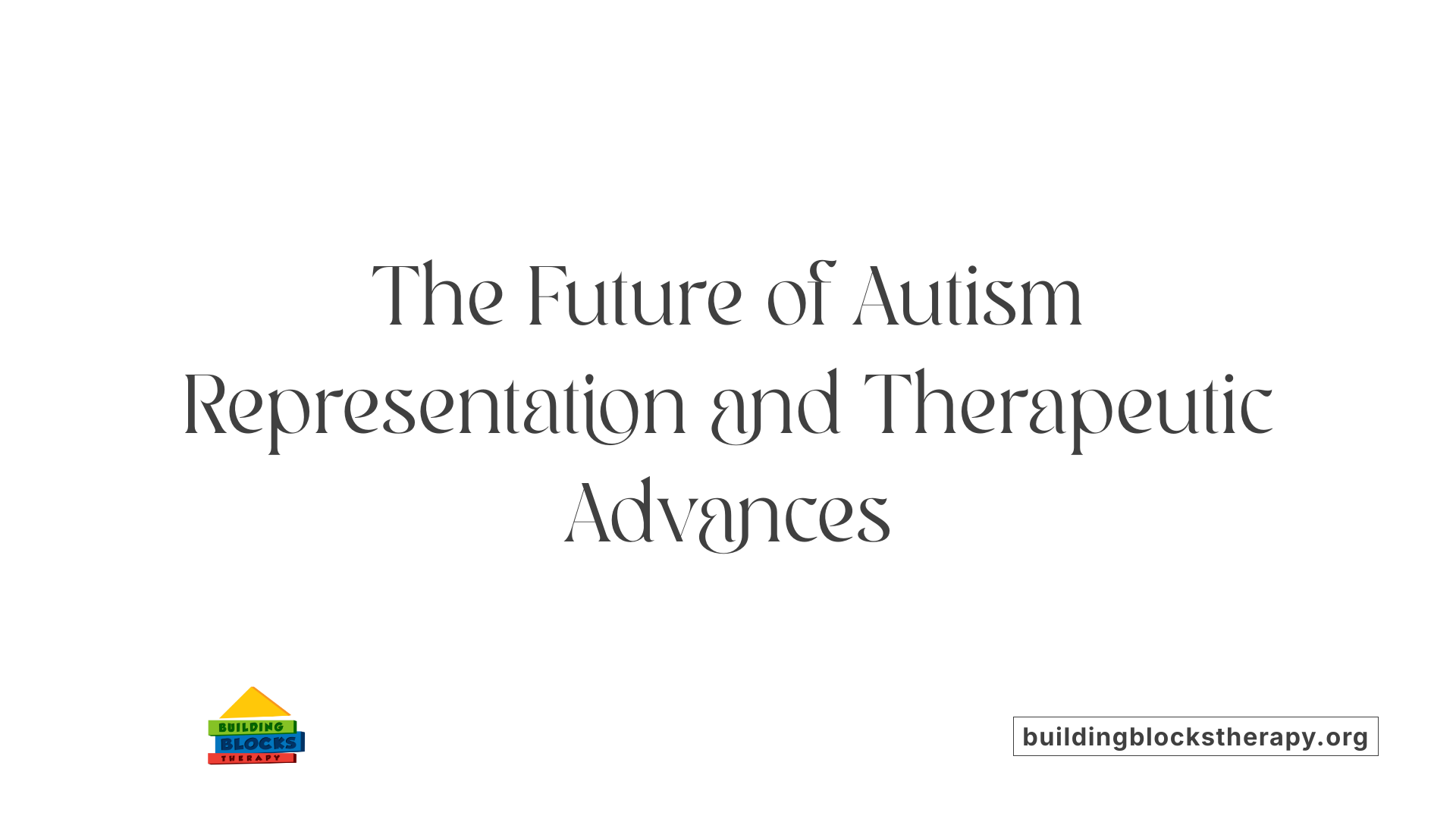
Increasing Diversity in Portrayals
Autism representation in films and television is broadening, moving beyond traditional stereotypes. Recent works showcase a wider range of experiences across the autism spectrum, highlighting individuals who are gifted, average, or face severe challenges. This diversity helps the public understand the varied nature of autism, promoting empathy and breaking down misconceptions.
Integration of New Therapeutic Approaches
The treatment landscape for autism spectrum disorder continues to evolve, incorporating cutting-edge therapies alongside established methods. Innovations include technology-based interventions, such as virtual reality and AI-driven tools, aiming to improve social communication and behavioral skills. Early diagnosis and personalized treatment plans help enhance functioning and quality of life.
Use of Media to Promote Inclusivity
Media plays an influential role in raising awareness and fostering inclusion for people with autism. Films and television shows now focus on authentic storytelling and character development, offering deeper insight into the lives of autistic individuals. This approach encourages acceptance and provides valuable education to audiences worldwide.
Bringing Autism Experiences to Light Through Media and Therapy
Movies and TV shows about autism serve as vital tools for educating the public, fostering empathy, and highlighting the breadth of experiences within the autism spectrum. They illuminate not only the challenges faced by individuals with ASD but also their strengths, potential, and humanity. Coupled with effective therapeutic interventions like Applied Behavior Analysis (ABA), which is delivered by qualified professionals and supported by engaged families, these portrayals contribute to greater awareness, better support structures, and improved quality of life. As society continues to embrace diverse narratives and evidence-based practices, the journey toward understanding and inclusion for people with autism progresses, both on screen and beyond.
References
- Movies about autism spectrum disorder- Mental Health ...
- Applied Behavior Analysis (ABA)
- Applied Behavior Analysis (ABA)
- The Controversy Around ABA
- Applied Behavior Analysis (ABA)
- Understanding Your Child's ABA Therapy Providers
- Applied Behavior Analysis (ABA)
- The Top 10 Reasons Children With Autism Deserve ABA
- Applied Behavior Analysis (ABA)
- 6 Benefits of ABA Therapy for Children with Autism






